“It Rhymes With Takei” Comic Memoir – Review
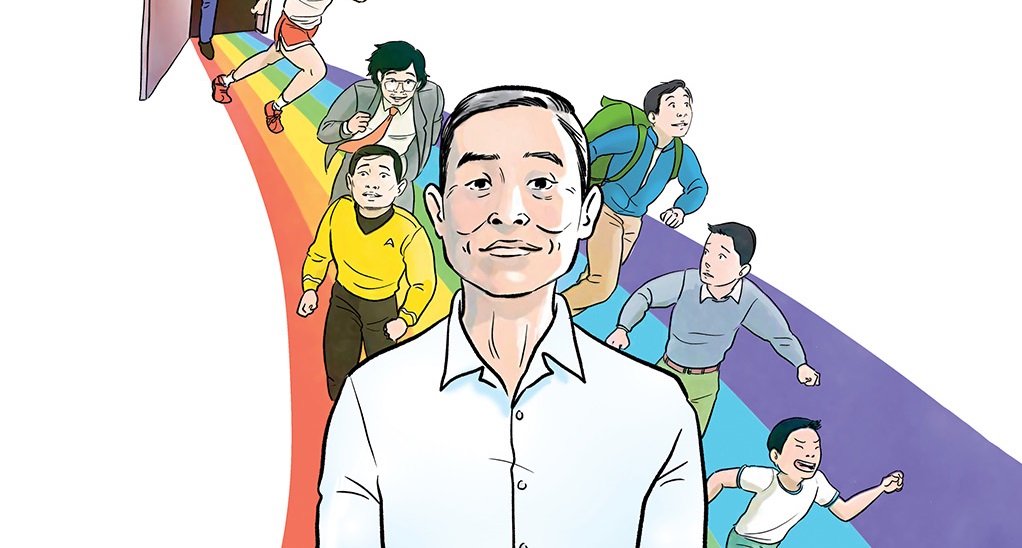
From author, actor, activist, and social media phenom George Takei comes a brand-new graphic memoir, It Rhymes With Takei. It’s a broad look at his experience as a gay man in America — a place where being gay is often a fraught experience.
I was provided with a review copy of It Rhymes With Takei. The opinions I have shared are my own.
Takei knew he would be a good actor early on because he was always acting anyway. His differences as an Asian American had gotten him interned during WWII. He feared his differences as a homosexual could get him in trouble, too, so he hid this part of himself. He feigned attraction to women and didn’t dare let anyone know the truth inside his heart.
No wonder acting came naturally.
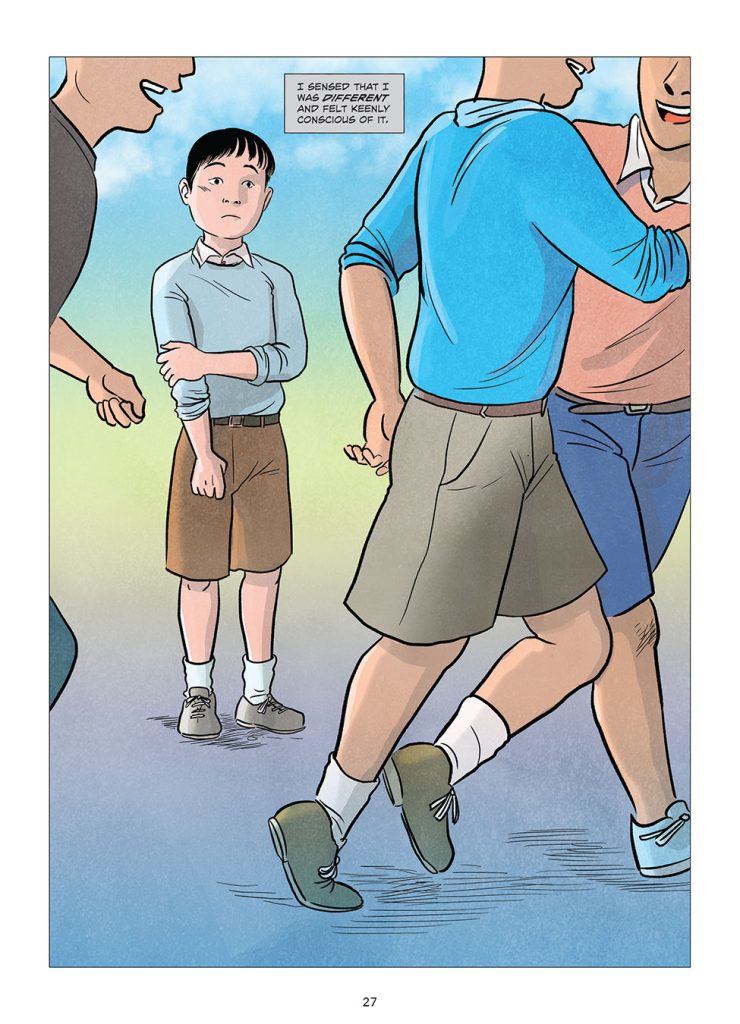
Takei wasn’t wrong to be afraid: throughout his young adulthood, cops were planted to catch gay men, gay bars were often raided, and actors lost their careers if they were caught. Marsha P. Johnson fomented the Stonewall uprising when Takei was thirty-two years old, beginning dramatic shifts in gay liberation, and he had already been fearfully avoiding gay community spaces for an entire adult life by then.
Takei was always intimately involved with politics. He supported the campaigns of progressive candidates and ran for office himself. But he was tormented by the fact that he advocated openly for many human rights, but he was too afraid to advocate for gay rights — something so intimately important to him that he had to bury deep.
It’s not all pain, though. He never struggled with self-loathing and always wholly accepted himself. Takei attributes Buddhism with this understanding of self, which we see unfolding in some gorgeous pages that are among my favorites in the entire book.
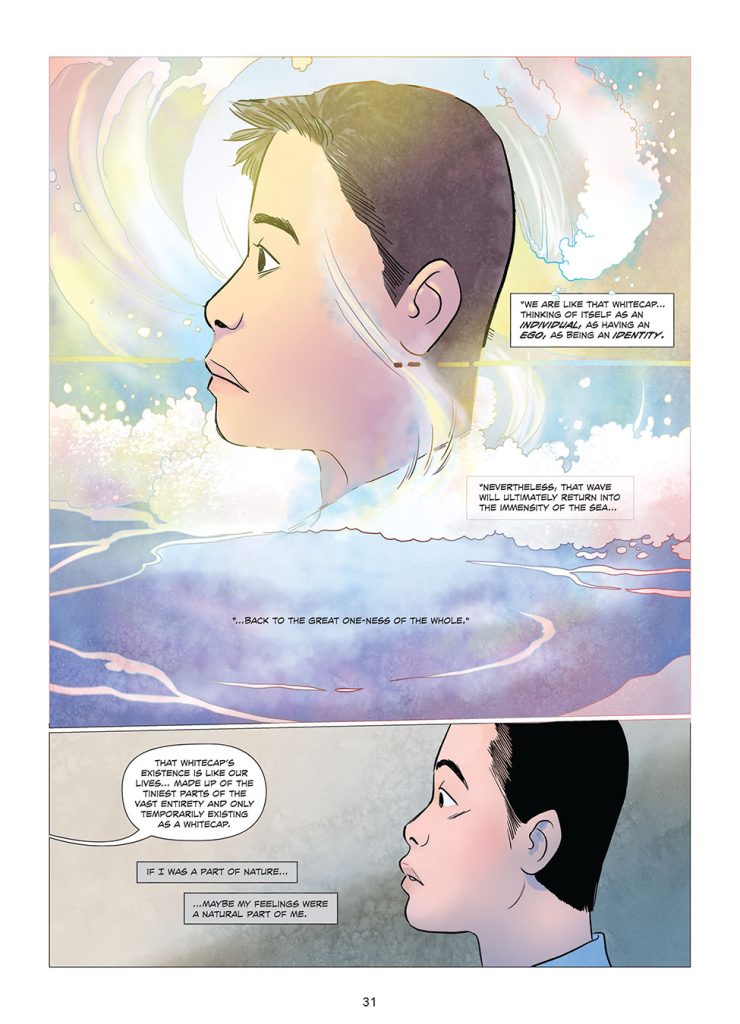
Takei had a beautiful time traveling Europe, making many friends, and finding the dream of a better future through Star Trek. Walter Koenig and Nichelle Nichols were steadfast by his side, intuitively knowing what he could not bring himself to say.
In one moving sequence, Takei approaches Star Trek creator Gene Roddenberry about depicting the struggle of gay rights on their show. Roddenberry is sympathetic, but Star Trek was already struggling with censors after the interracial kiss between characters Uhura and Kirk.
Roddenberry wished he could show male crewmen walking through the ship’s halls holding hands. Star Trek was cancelled first. The franchise did eventually get to show committed gay relationships, but it took a few decades.
Later, Takei was courageous enough to join a running club for gay folks. He hoped to remain anonymous, but of course, he was very recognizable from his long career. He was cautiously relieved to find total support from his running mates.
That was also where he met his eventual husband. They supported each other through the tragedy of the AIDS crisis. They lost friends and lovers. And they showed they loved one another by always practicing safe sex.
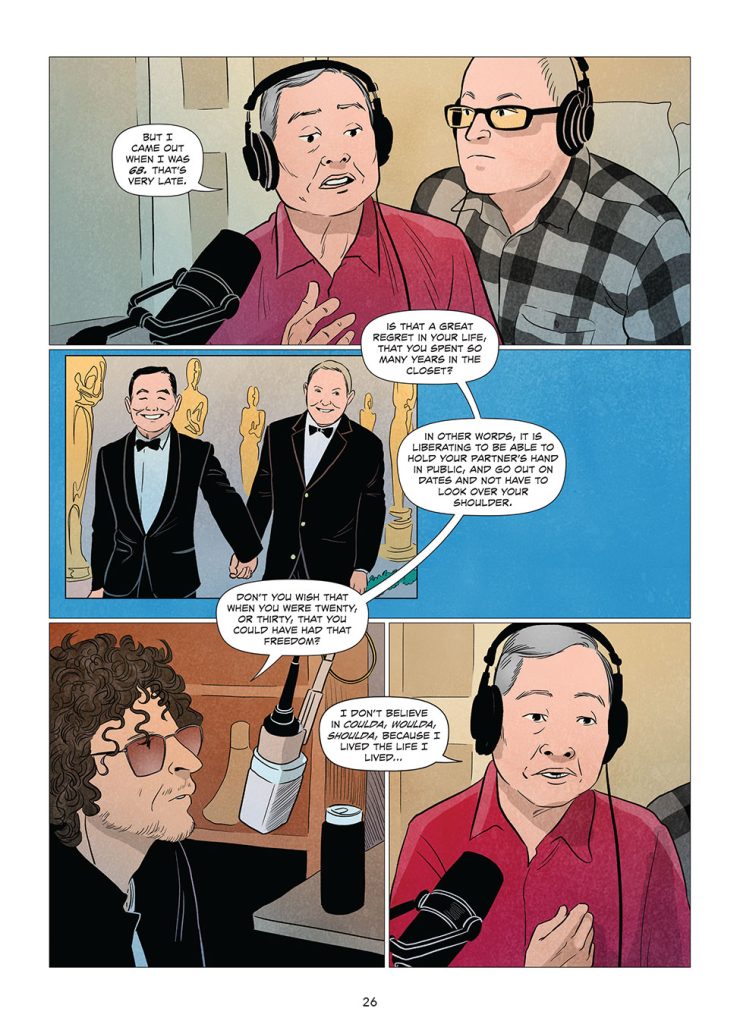
It’s heartbreaking to know this integral part of Takei’s life remained hidden until he was sixty-eight years old. He finally came out in 2005. Takei hit the ground running and fully utilized this opportunity to advocate for gay rights, as he always wished he could.
The ending is happy for Takei and uneasy for America. There is a lot of recent pushback to the civil rights movement, and the current administration is hostile toward people just like Marsha P. Johnson.
One of my favorite aspects of Takei’s story is his transparent love for his family. He was very involved in the lives of his brother’s children when they were small. Although his brother cut him off after learning Takei is gay, his brother’s kids accepted him and remained close. In fact, Takei is now involved with the children of his brother’s children.
I already knew on a personal level that Takei loves kids. When I went to a Star Trek convention at the tender age of six years old, I needed to get a picture signed by George Takei himself. My mom memorialized the moment that shows Takei’s enthusiasm for young fans.
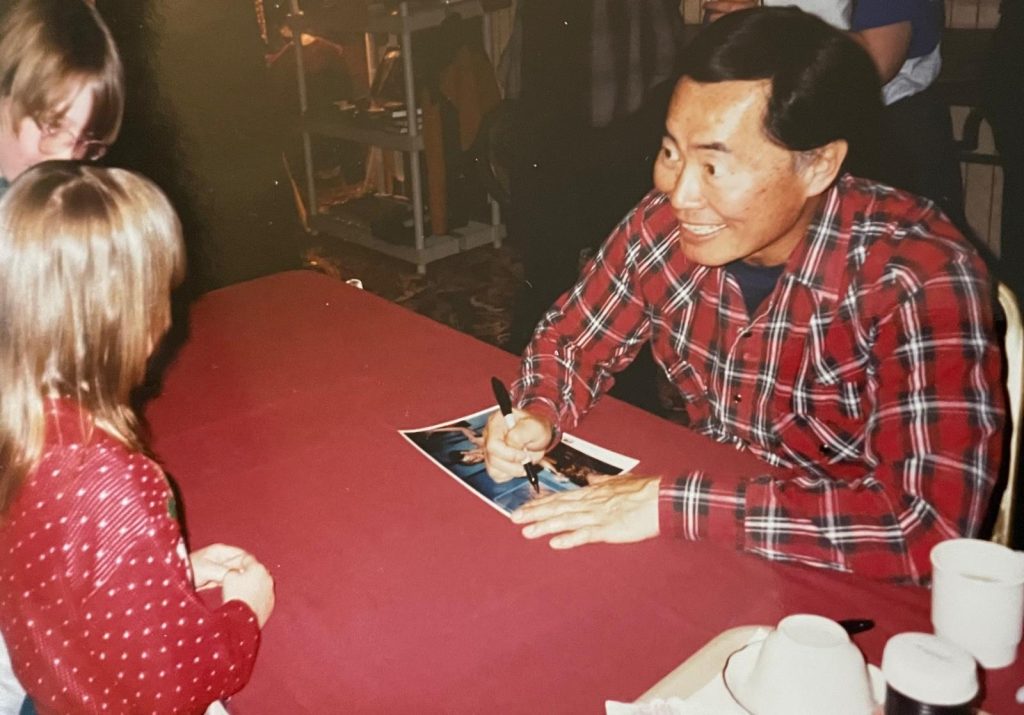
I vividly recall his warm presence. He took the time to talk to me and complimented my sweater. He was a little bashful because I had chosen a moment on Star Trek: The Original Series where he’s shirtless and sword-wielding, which I understand must have been kinda weird. But I loved his role in that episode.
As a nonbinary human, I have always related to heroes as much as heroines. I was drawn to Sulu on Star Trek: The Original Series in “The Naked Time” because he was liberated, muscular, and sword-wielding — my gender identity, if I’ve ever heard one. I loved the fun of it. I loved the sense of adventure. And I loved how kind the actor turned out to be in person.
Even before he could come out as gay, Takei was supporting the gay community in his own way. He was iconic for us before we knew why. Although It Rhymes With Takei mulls a sense of loss in his inability to advocate for LGBTQ+ rights, I hope he understands that he was doing exactly what he needed to do.
Well-paced, thoughtful, and beautifully illustrated by Harmony Becker, It Rhymes With Takei offers a bittersweet perspective on the highs and lows of life as a gay Asian American in modern American history. I felt grateful for the historic context on our current moment. I wish it weren’t so relevant and important right now, but once again, Takei has shown up for us when we really need him.
–
Available for pre-order, It Rhymes With Takei will debut June 10, 2025.
Author: SM Reine
Half-Tellarite SM Reine is a New York Times and USA Today bestselling author of fantasy. She’s been publishing since 2011 and a nerd since forever.
Help support independent journalism. Subscribe to our Patreon.
Copyright © The Geekiary
Do not copy our content in whole to other websites. If you are reading this anywhere besides TheGeekiary.com, it has been stolen.Read our






